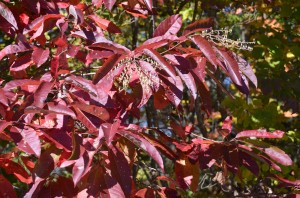Sourwood (Oxydendrum arboreum) is one of the most beautiful flowering trees in the U.S. Trying to establish one in your landscape can prove quite challenging. In the wild sourwood grows in shallow soils on steep craggy or rocky ground. Dry ground seems to be the rule. It grows either multi-stemmed (shrub-like) to 20-30 feet or tree form to 35-40 feet and half that in width.
Sourwood is a pioneering species. Tiny dehiscent seeds are dispersed into the wind and blown like dust over many acres of land. Tens of thousands of seedlings germinate each spring on new ground that may have been previously clear cut for reclamation. If available, supply water intermittently over dry periods the first two summers. Established trees tend to better cope with heat and dry soils.
For a home gardener the challenge seems to be getting one established. Site them in the type of soil and environmental conditions which rhododendrons and mountain laurels enjoy. They prefer a loose, gravelly, acidic soil containing some organic matter and excellent drainage. A newly-planted sourwood prioritizes by establishing its root system first.
Purchase primarily nursery container-grown trees, if you can find them. Plant in well-drained soil and prune the new tree or shrub back to 6-12 inches from the ground in early spring. Essentially, you are starting over with 100% root system and 10-15% top (shoot). What comes up is your new tree, more vigorous than one not pruned.
In nature sourwood seem to prefer the eastern facing slope of the woodland where they receive midday sun. Young transplants respond to fertilizing; older well-established trees do not. Sourwood requires little pruning and has few serious insect or disease problems.


 Posted in
Posted in 
